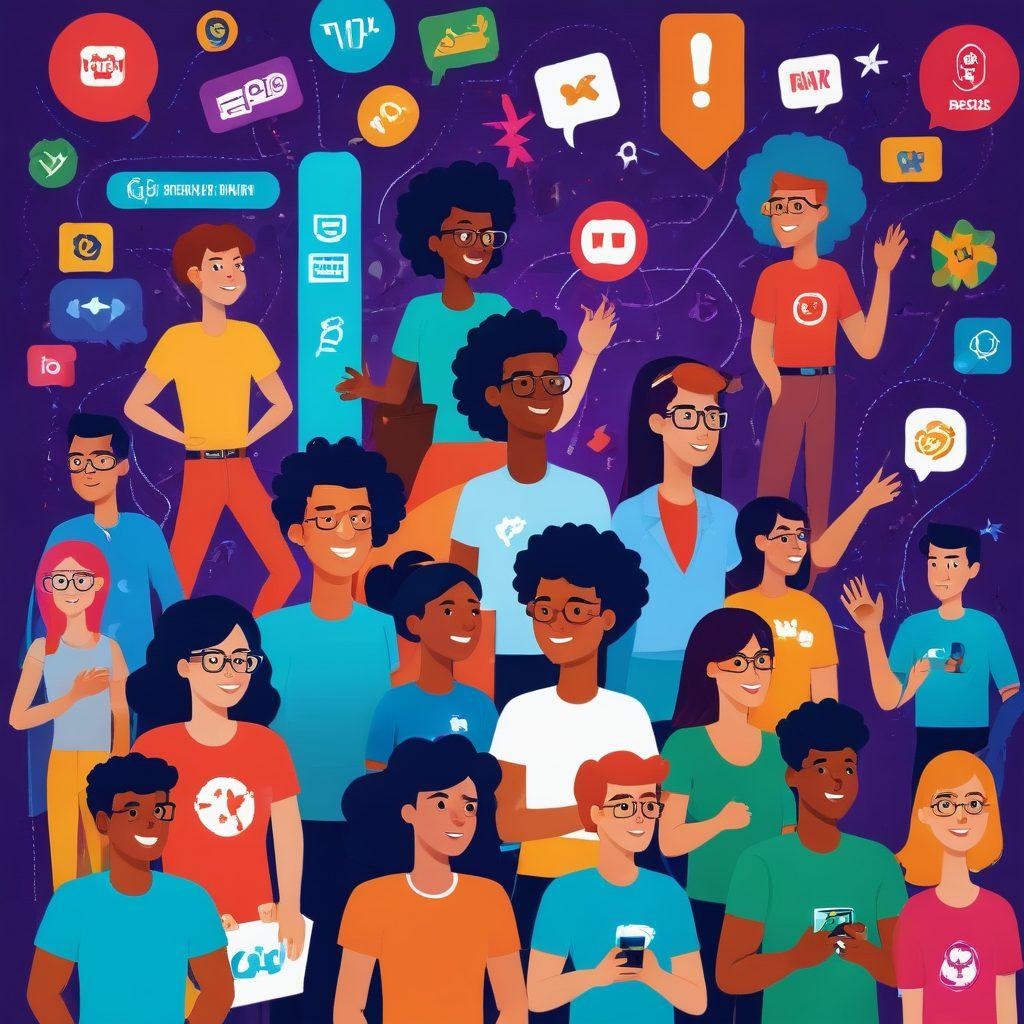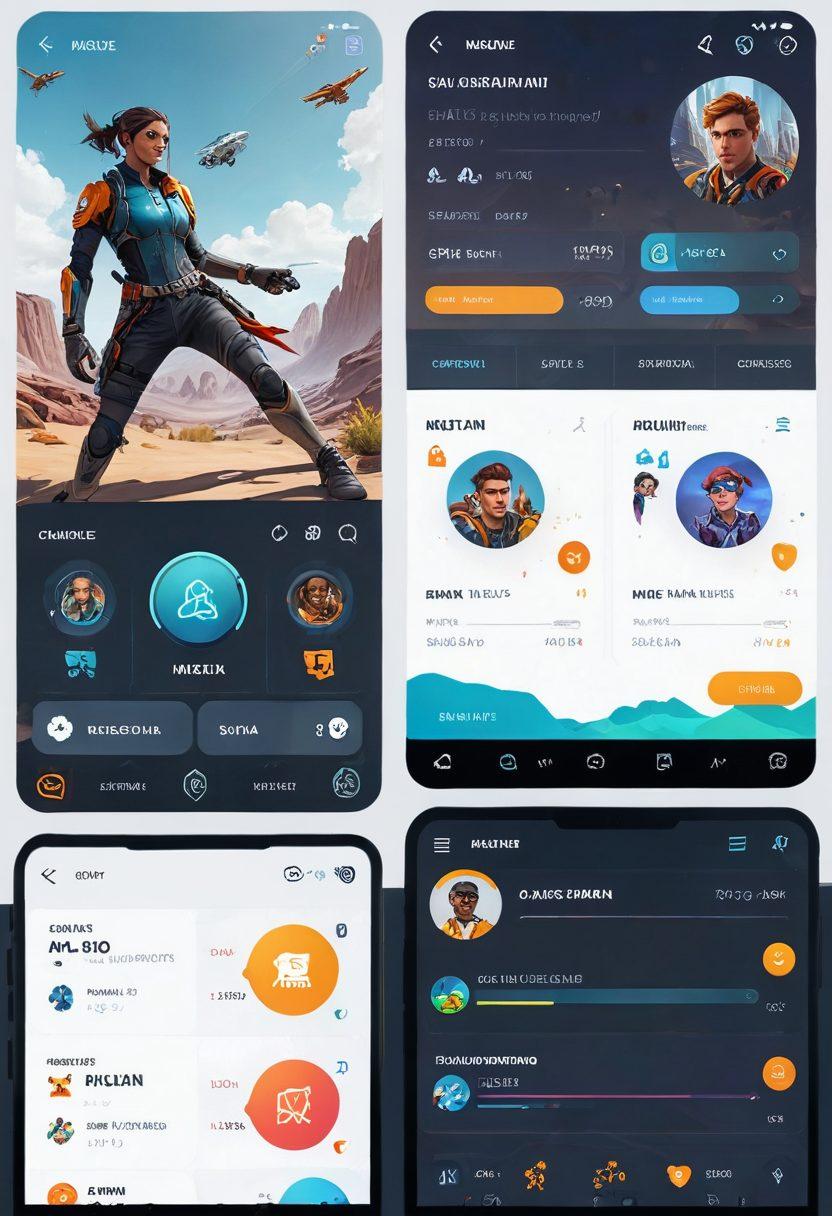Unleashing Fun: The Power of Gamification in User Experience Design
Imagine walking into a virtual world where completing a simple task feels like conquering a dragon or uncovering hidden treasure. Welcome to the realm of gamification—an innovative approach that transforms everyday activities into engaging, interactive experiences. As we dive into how gamification can revolutionize user engagement in design, let’s explore why blending game design and game mechanics into various platforms can supercharge user experience, turning mundane tasks into thrilling adventures.
At its core, gamification leverages game mechanics to motivate users and enhance their interaction with a product. Think of it as injecting a shot of adrenaline into user experience. For instance, through points, badges, and leaderboards, designers can tap into our innate desire for competition and achievement, effectively leveling up our design strategy. So, how can you integrate these principles into your projects? It's all about understanding your audience and their motivations. Do they crave community through social gaming, or are they more driven by individual achievements and rewards?
Take the concept of progress tracking, for example. Gamification allows users to see their advancement in real-time, transforming the experience from a linear process into an engaging journey. As they ‘play’ through your design, they encounter challenges and milestones that keep them hooked. Consider the success stories of fitness apps that implement challenges and rewards—users are not just tracking their exercise; they are often competing with friends and striving for that next level. The blend of fun with functionality ensures that users return and continuously engage with your product, creating a vibrant game culture around mundane tasks.
Another fascinating facet of gamification is its compatibility with cutting-edge technologies like virtual reality (VR) and augmented reality (AR). Imagine a design that not only guides users through a product but also immerses them in a simulated environment where they can interact with elements in a playful manner. This kind of innovative experience not only captivates users but also enhances memory retention and understanding. Users learn better when they’re having fun, solidifying gamification’s role in educational and training applications.
Ultimately, the goal of gamification in user experience design is to strike a balance between functionality and entertainment. How can you ensure that your design is not just interactive, but also fun? Start small; incorporate simple game elements to experiment and measure user engagement. As you develop your skills in game development and refine your approach to user experience, consider what unique gaming experiences you can create. Remember, in this brave new world of design, the lines between gaming and reality are blurring, making way for exciting, playful interactions that motivate and delight. So are you ready to level up your design?
From Play to Performance: Integrating Game Mechanics into UX
Imagine a world where learning and engagement collided in an explosion of color and creativity—welcome to the realm of gamification! From education to marketing, the integration of game mechanics into user experience design has revolutionized how we interact with various platforms. But why is it that these interactive elements resonate so deeply with us? Perhaps it’s because, at our core, we are all players seeking fun, challenges, and rewards. As the old saying goes, 'All work and no play makes Jack a dull boy,' and gamification aims to sprinkle a little excitement into our everyday tasks, transforming mundanity into a thrilling adventure!
Gamification is more than just a buzzword; it's a dynamic approach that takes the principles of game design and functionality and applies them to create engaging user experiences. With this innovative method, we can tap into the psychology of our users, generating a sense of achievement and fostering continuous interaction. Think about your favorite game—what makes it so addictive? Is it the vibrant portrayal of game culture, the social gaming aspect, or perhaps the daunting levels of competition? By understanding these elements, designers can elevate the experience from mere utility to a captivating and interactive journey.
The beauty of integrating game mechanisms into user experience design lies in its versatility. Whether we're talking about augmented reality experiences that blend the digital and physical world or simulations that offer immersive training scenarios, gamification can create a profound impact across various industries. Picture this: you're in a training seminar, yet instead of traditional lectures, you're participating in a virtual reality game where you have to solve real-life challenges. This doesn't just improve learning outcomes; it also fosters higher engagement levels and makes the process, dare I say, fun! Why wouldn’t someone prefer gameplay over tedious slides?
Let's face it; modern users have endless options at their fingertips. If you want to capture their attention, providing fun alone is not enough; you need to engage them actively. Gamification is the key here, offering captivating experiences that leverage the intrinsic motivations we all share. For example, loyalty programs that reward customers with points resembling in-game currency not only encourage repeat interaction, but also inject a playful spirit into an otherwise transactional relationship. Could you imagine your customers actually looking forward to their next purchase, excited by the potential rewards? That’s the power of game development in action!
To make your integration of game mechanics successful, it’s essential to keep your audience in mind. What do they value? What are their goals? The answers to these questions will pave the way to a more personalized experience that resonates deeply with users. Start small by implementing simple badges and points for achieving tasks, and gradually introduce more complex interactive elements as they engage with your platform. Remember, the ultimate goal is to create a user experience that feels less like a chore and more like an epic quest—one where every step taken is filled with entertainment and excitement. So, ready to play?
Engaging Users Through Play: The Future of Interactive Experience Design
Imagine walking into a world where learning feels like an adventure, where tasks transform into levels, and where achievements are celebrated like winning a championship. This is the world of gamification—a captivating technique that’s revolutionizing user experience design. With the integration of concepts from game design and mechanics into user interaction, gamification enhances engagement and interaction in ways we could only dream of a few decades ago. In the age of digital distractions, how do we ensure that users pay attention? The answer lies in play.
Engaging users through play doesn't just make experiences enjoyable; it transforms them into a vibrant, interactive playground. Think about your favorite mobile game. What keeps you hooked? It’s likely the compelling narrative, well-crafted rewards, and the thrill of competition that keeps you striving for that next level. Gamification cleverly borrows these elements to turn mundane tasks into extraordinary journeys. The future of interactive experience design hinges on this very idea—using game mechanics to enrich user interaction and create unforgettable experiences that retain users. Isn't it exciting to think about how a touch of entertainment can elevate everyday tasks into engaging engagements?
As we dive deeper into the realm of gaming, we encounter fascinating technologies like virtual reality (VR) and augmented reality (AR). These advancements are taking gamification to sensational heights, allowing users to step into immersive simulations. For instance, imagine a training session where employees don VR headsets to engage with lifelike scenarios and challenges. Suddenly, training becomes an adventure filled with dynamics that are both educational and entertaining. The lines between learning and play blur in the most delightful ways! Have you ever considered how these tools could redefine traditional learning environments?
The key to successful gamification is understanding human motivation. What makes us tick? What do we desire? Intriguing questions like these have led to the emergence of social gaming, where competition and collaboration coexist, engaging users deeply. By tapping into game culture and leveraging social networks, developers can create experiences that resonate with users on a personal level. It’s about creating a community where users can share their victories, laugh at their missteps, and ultimately engage more profoundly with both the game and each other. Wouldn't it be incredible to forge such strong connections through gaming?
In a world clamoring for connectivity and engagement, companies that harness gamification strategies will flourish. From startups to giant corporations, the call for fun, entertainment, and play is more robust than ever. Gamification is not merely a trend; it embodies the future of interactive experience design. As we explore newer technologies and innovative game development strategies, remember—creating engaging experiences can lead to increased loyalty and satisfaction. After all, life should be fun, don't you think? So, are you ready to revolutionize your design strategy through the power of play?


